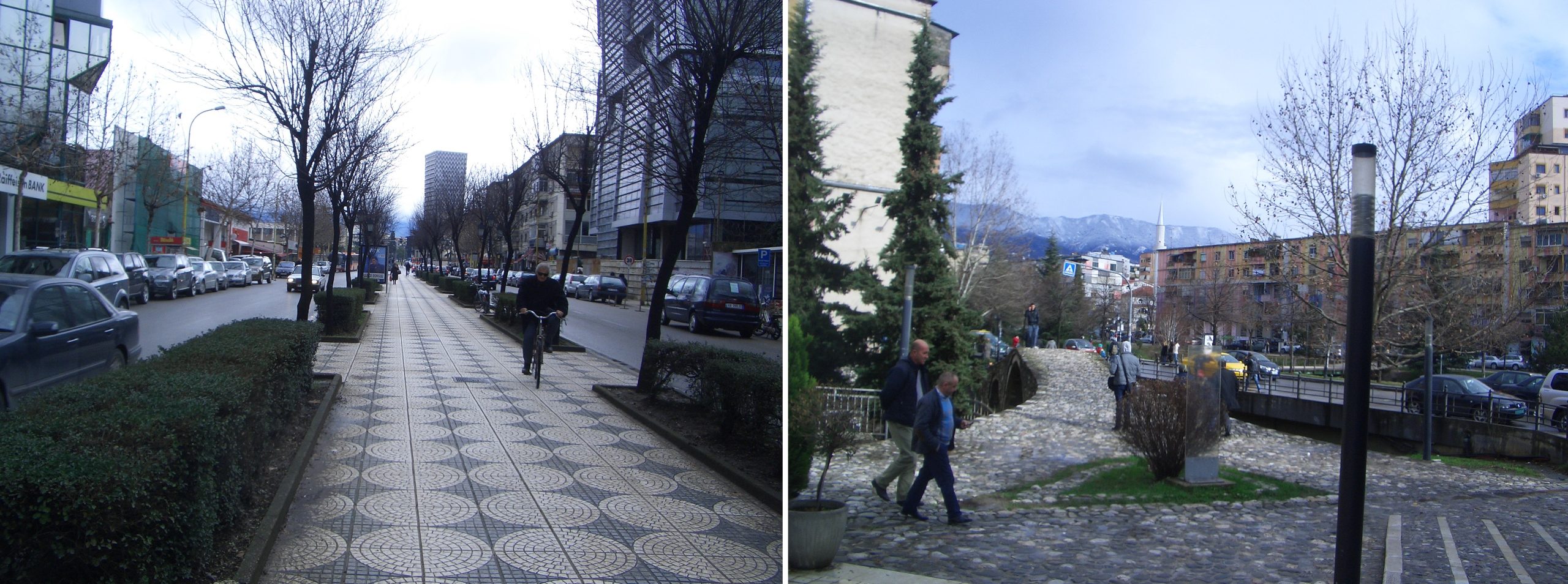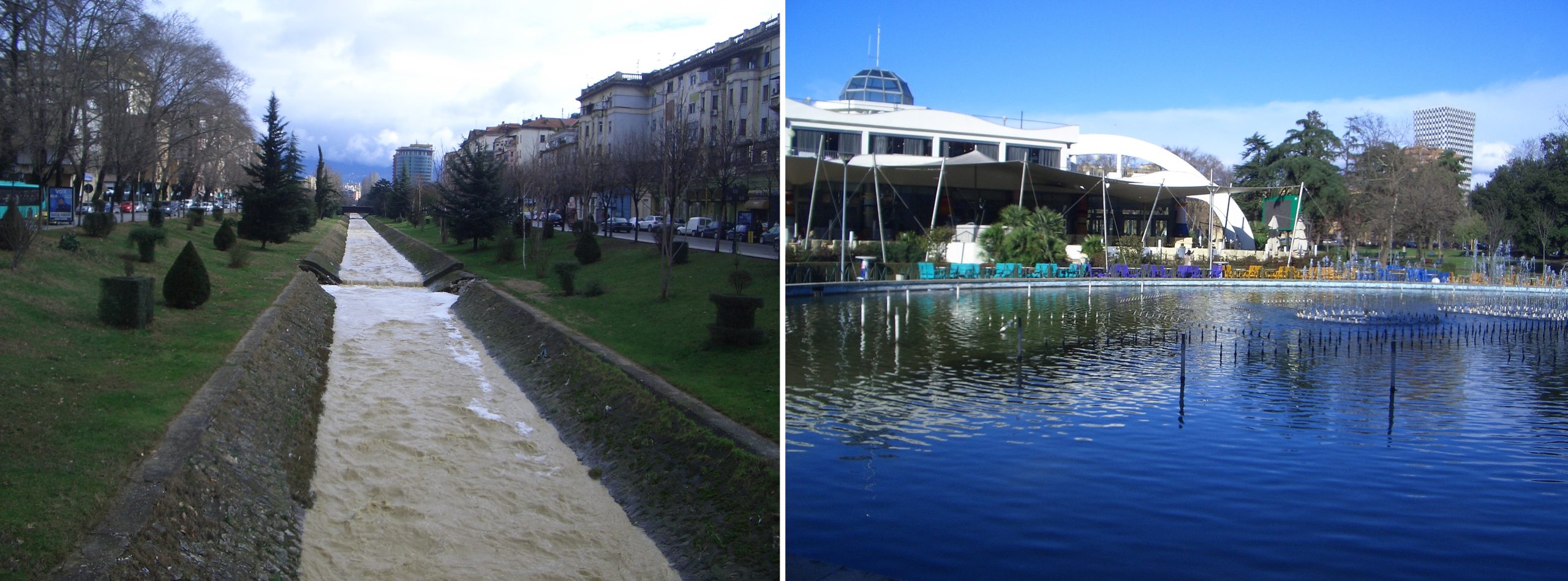29
Paulo Rui Anciaes, University College London, UK
It is said that in the 1970s there was only 600 cars in Albania. After the fall of the communist regime and the chaotic 1990s, the Albanian economy started to grow very fast. Tirana’s population doubled and its area expanded accordingly. There are now 300,000 cars in the city, and they can be seen everywhere, from the wide roads and roundabouts in the suburbs, to the small streets in the city centre used as “rat runs” to escape congestion.
However, Tirana must be the only European capital city with neither a train station nor a bus station. Pedestrians are increasingly exposed to air pollution, noise, and collision risk when they walk along or cross busy roads. Pedestrian pavements also tend to be in worse conditions than road carriageways, which is not surprising considering that the expenditure in road maintenance and repair (an average of $1 million per year in the period 1996-2000) was 78 times greater than the expenditure in pavements.
So at first sight Tirana looks like another example of a “lost opportunity”, a city where fast economic and urban growth has lead to the dominance of the automobile. However, if we look into more detail, we can find hints that fast growth is not necessarily accompanied by the deterioration of walkability and street liveability.
Tirana is one of those cities with all the spatial and social pre-conditions to be walkable. The city centre is densely populated and has a wide diversity of people and businesses. Social activities are also conductive to walking, as one of the most popular past times in Albania is the xhiro, the evening walk around town. Recent improvements in lighting and street landscaping have made the city more inclusive, by allowing women, children, and older people to reclaim the space that once belonged mostly to “men in leather jackets smoking slim cigarettes.” Squares, small parks, and courtyards, have been renovated, and outdoor cafés have blossomed all over the city, providing opportunities to relax and socialize.
However, these spatial and social advantages are now under threat. There are signs of increased segregation. The Bllok area, once exclusive to the political elite, is becoming off-limits to some people again, but now for economic reasons, given the prices of properties. Shopping centres are also starting to dot the road linking Tirana with Durres, in areas with no walking access. And attitudes towards walking are changing. Tirana is becoming status-conscious and a sentiment is surfacing that “walking (other than recreational walking), cycling, and public transportation are lower-image modes” (Pojani, 2011, p.101-102).
It is not easy to create pedestrian space, due to the competing demands from other road users. This was not a problem in 20th century Tirana, because “cars behaved as bicycles, swerving to avoid the pedestrians” and bicycles used “whichever side of the road they liked” (De Wall, 2005, p.38). It is certainly a problem now. Initiatives to ban car traffic in one neighbourhood in 2004-2005 were discontinued due to protests of residents and businesses. In 2010, a plan was devised to transform the main square of the city into a space “where the bustle and the chaos stops, allowing for something else to happen, whatever it might be“, but this plan was scrapped one year later. The renewed interest in cycling and the plans to implement a tram system create further needs for road space.
So the city had to resort to less radical solutions. For example, many of the boulevards that line the city now have a wide median strip for pedestrians and bicycles. There is also a nice short pedestrian route that takes in a few historical sites and is used as a shortcut to avoid two busy roads.
The improvement of conditions for walking can sometimes be achieved with minimal changes. Dropped kerbs are a simple solution with a significant impact on the mobility of wheelchair users. The continuity of pedestrian space can also be assured by improving pavement surface at entrances to garages and by monitoring pavement parking.
However, the quality of the walking experience does not depend only on what is beneath our feet, but also on what we see with our eyes. Communist-era architecture is usually synonymous with ugly concrete buildings and soulless public spaces, and Albania is no exception. The period after the end of the communist dictatorship was not a golden age of urban planning either, as public spaces were occupied by illegal residential or business buildings, most notoriously in in the margins of the Lana stream and in Rinia Park. These areas have been cleaned up and are now pleasant places.
The old apartment blocks also look in better conditions than they really are because their frontages have bright colours, following a “painting campaign” led by Edi Rama, a painter who had held more exhibitions than political offices by the time he became mayor in 2000. However, the new towers popping up everywhere are starting to spoil the landscape, as they replace older smaller buildings. The plans for multiplying the number and the size of these towers (for example, in the main square) reveal a future Tirana that looks hostile to pedestrians.
Through this blog I have provided reflections to add to the idea that policy-makers need to engage in dialogue with the public and with each other to achieve sustainable urbanization. The redesign of the city should involve the different types of users of the streets. Transport planners also need to work together with urban planners and architects to control urban sprawl and to ensure that the city grows at a scale that is meaningful to people.
References
De Waal, C. (2005) Albania Today – A Portrait of Post-Communist Turbulence. I.B.Tauris, London.
Pojani, D. (2011) Mobility, equality and sustainability today in Tirana. Journal of Land Use, Mobility and Environment. 4(2), 99-109.
All images used in this blog have been taken by the author
Author Biography
Paulo Rui Anciaes is a researcher at the Centre for Transport Studies, University College London. He is interested in walking, equity issues in transport, and environmental justice. This post is a condensed version of a series of posts in his Community Severance blog. Paulo also blogs about alternative environmentalism and contributes to the UCL Street Mobility blog and the LSE Review of Books.
Contact email: p.anciaes@ucl.ac.uk



